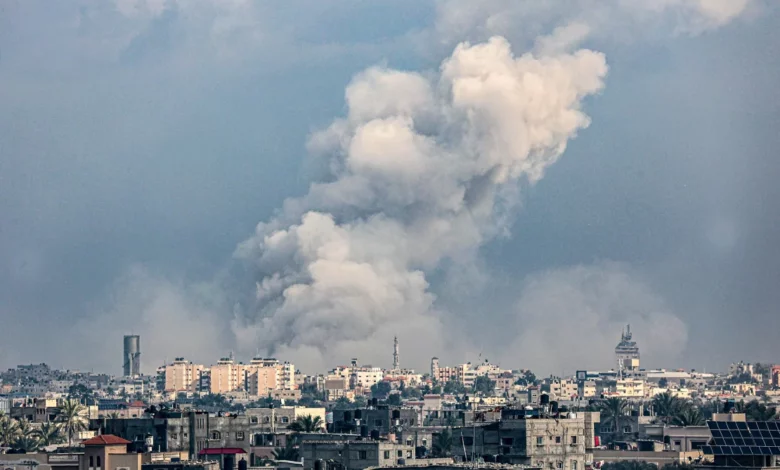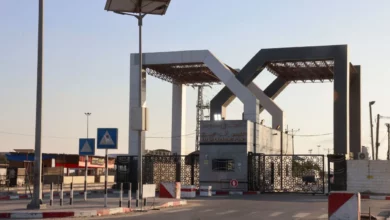
“The IDF will immediately use all its strength to destroy Hamas’s capabilities,” Netanyahu said. “We will destroy them.”
Now, the Israel Defense Forces (IDF) is shifting to a new phase of its war on Hamas in Gaza – and there are signs its objectives are changing too.
“The record is not very friendly to military campaigns seeking to eradicate political military movement that are deeply rooted,” Bilal Y. Saab, an associate fellow in the Middle East and North Africa at Chatham House, told CNN.
“IDF leadership understands very well that the most they can do is severely degrade the military capabilities of Hamas,” Saab said.
Israel has seen some successes in that regard; its forces claim to have killed thousands of Hamas fighters, including some high-ranking members, and have dismantled some parts of the group’s vast tunnel network under the enclave.
But challenges remain and an endgame is far from sight. Few countries at war set deadlines. Israeli officials have warned of a lengthy war that could stretch through the entirety of 2024 and beyond.
It will unfold in front of an international community that is increasingly aghast at the extraordinary humanitarian crisis and spiraling civilian deaths in Gaza.
And as international pressure increases, so too could domestic unease towards Netanyahu – an embattled prime minister eager to point to tangible victories.
“There is a race against time,” said Saab, outlining the key questions facing Israel’s leadership. “At what price is this tactical success going to come, and how much time do the Israelis have to achieve that tactical success without suffering from more significant international outrage?”
A ‘new combat approach’
The destruction of Hamas – the goal that Netanyahu touted on October 7 – was lofty, elusive and, according to many analysts, impossible.
“This kind of mission cannot be completed – we’ve seen it fail over the years many times,” Saab said.
Hamas’ influence extends far beyond Gaza, meaning a total defeat of the group is at least highly ambitious for Israel, if it can be achieved at all.
In a speech marking the anniversary of the attacks, Netanyahu reiterated his goals for the conflict: “To eliminate Hamas, return our hostages and ensure that Gaza will no longer be a threat to Israel.”
But it remains unclear whether IDF leadership places eliminating Hamas atop its priorities. IDF intelligence chief Maj. Gen. Aharon Haliva left out the destruction of Hamas when listing military goals in a speech on Thursday, Israeli media noted.
And also on Thursday, Israeli Defense Minister Yoav Gallant unveiled plans for the next phase of the war in Gaza, emphsaizing a new combat approach in the north and a sustained focus on targeting Hamas leaders suspected to be present in the enclave’s southern territory.
In the third phase, IDF operations in northern Gaza will encompass “raids, the destruction of terror tunnels, aerial and ground activities, and special operations,” according to Gallant.
“This phase will be less intense, but it will take more time,” Yohanan Plesner, the President of the Israel Democracy Institute and a former Knesset member for the Kadima party, told CNN.
If the more realistic target is a severe reduction in Hamas’ fighting capabilities, many analysts say that tangible progress has been made in the past three months.
“The definition of success will not be to catch or kill all Hamas operatives, but to ensure that Hamas can no longer effectively govern the Gaza Strip,” Plesner said. “Hamas is organized like an army, with command and control centers, regiments and brigades. This command structure is being seriously challenged and dismantled.”
Addressing reporters in Tel Aviv, Netanyahu said last week that the Israeli military is “fighting with force and new systems above and below the ground” and claimed to have killed 8,000 Hamas fighters in Gaza, according to Army Radio.
CNN can’t verify this figure. The Hamas-run Health Ministry in Gaza says nearly 23,000 people have been killed in the territory since the war began. The ministry does not distinguish between civilians and combatants, but both the ministry in Gaza and its counterpart in the occupied West Bank suggest that approximately 70% of those killed or injured are women and children.
Israel believed Hamas had about 30,000 fighters in Gaza before the war began on October 7, the Israel Defense Forces told CNN in December. The fighters were divided into five brigades, 24 battalions and approximately 140 companies, the IDF told CNN, each with capabilities including anti-tank missiles, snipers and engineers, and rocket and mortar arrays.
A hunt for Hamas’ leaders
Israel has also claimed some success in targeting Hamas’ tunnel shafts, a complex notoriously difficult for IDF troops to infiltrate. The IDF released a video this week which it says showed the dismantlement of one tunnel route under Al-Shifa Hospital, the largest medical complex in Gaza, that it accused Hamas of excavating.
Last month, it released other videos it said showed a network of tunnels which connect to residences and offices of senior Hamas leadership including Ismail Haniyeh, Yahya Sinwar, and Muhammad Deif.

But the bigger goal of finding and killing Hamas’ most important leaders in Gaza has eluded Israel to date.
“This is where intelligence is king,” Saab said. Gallant and other officials have repeatedly emphasized the importance of their efforts to eliminate senior Hamas commanders, with the defense minister vowing in late December that Sinwar would “meet the barrels of our guns soon.”
A longtime figure in the Islamist Palestinian group, Sinwar was responsible for building up Hamas’ military wing before forging important new ties with regional Arab powers as the group’s civilian and political leader.
“Organizations like these replace commanders pretty easily. I don’t think anyone is irreplaceable in Hamas,” Saab said. “But if you take out the symbolic heads of the organization, who knows if that might have a trickle down effect, especially with people who have military responsibilities.”
It seems unlikely that the new phase of Israel’s war will bring relief for the Palestinians trapped in Gaza, where a humanitarian crisis has spiraled to extraordinary levels.
But Netanyahu may be more likely to be bow in the face of domestic pressure, which has been rising in particular over the continued captivity of more than 100 hostages taken by Hamas on October 7.
Israel believes 25 hostages are dead and still being held by in Gaza, Prime Minister Benjamin Netanyahu’s office told CNN Friday. It leaves 107 hostages from the Hamas attack last year still thought to be alive.
The return of those hostages remains a goal in the war’s new phase, but failure to deliver would intensify political pressure on a decisive leader whose popularity among Israelis has only plunged since October 7.
“From day one, there was a clear disparity – there is support for the war goals and for the IDF, (but) the trust in the Israeli government is at an all-time low,” Plesner said, “There’s a huge gulf.”
CNN’s Richard Allen Greene, Alex Marquardt, Niamh Kennedy and Lauren Izso contributed reporting




